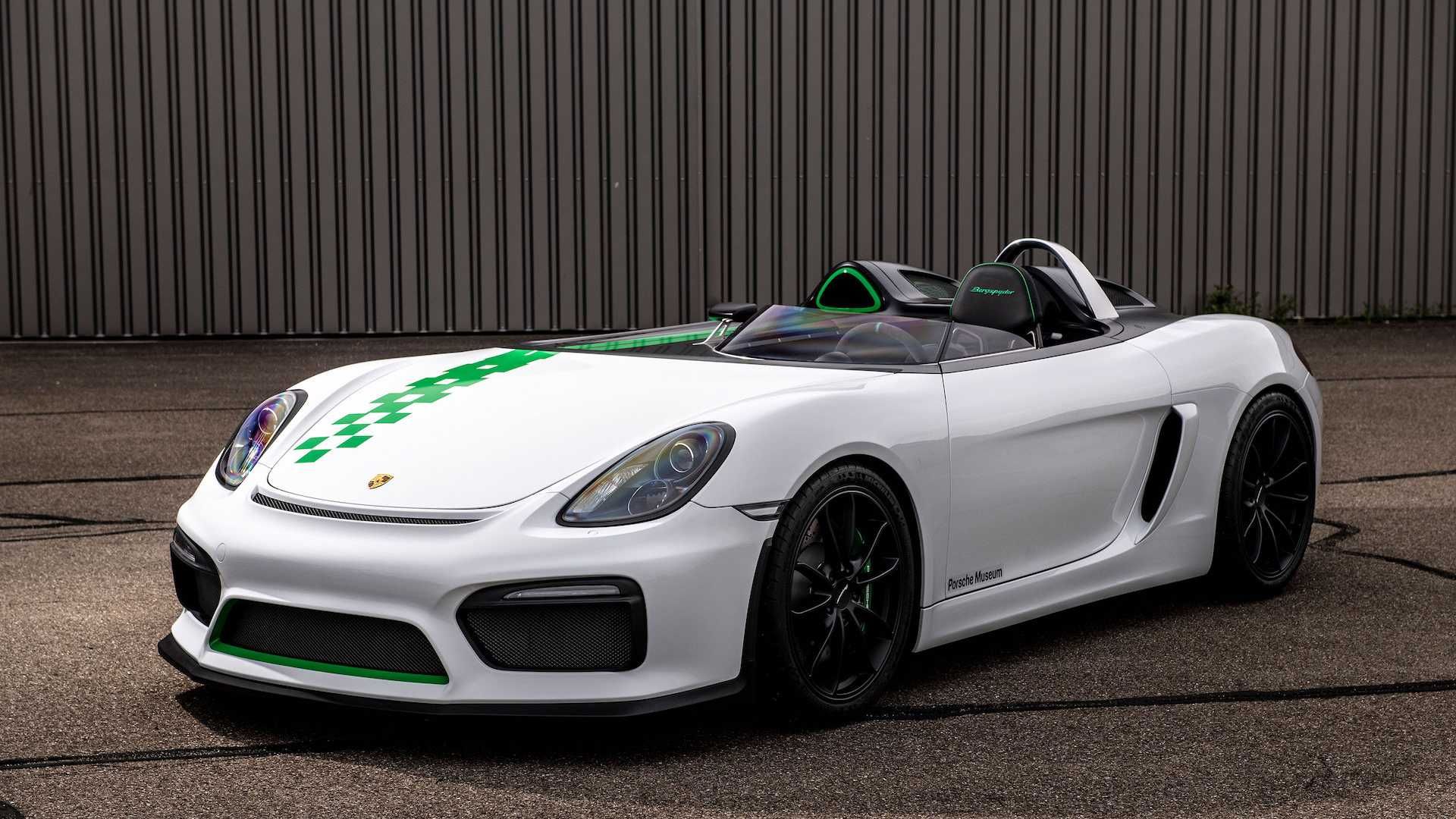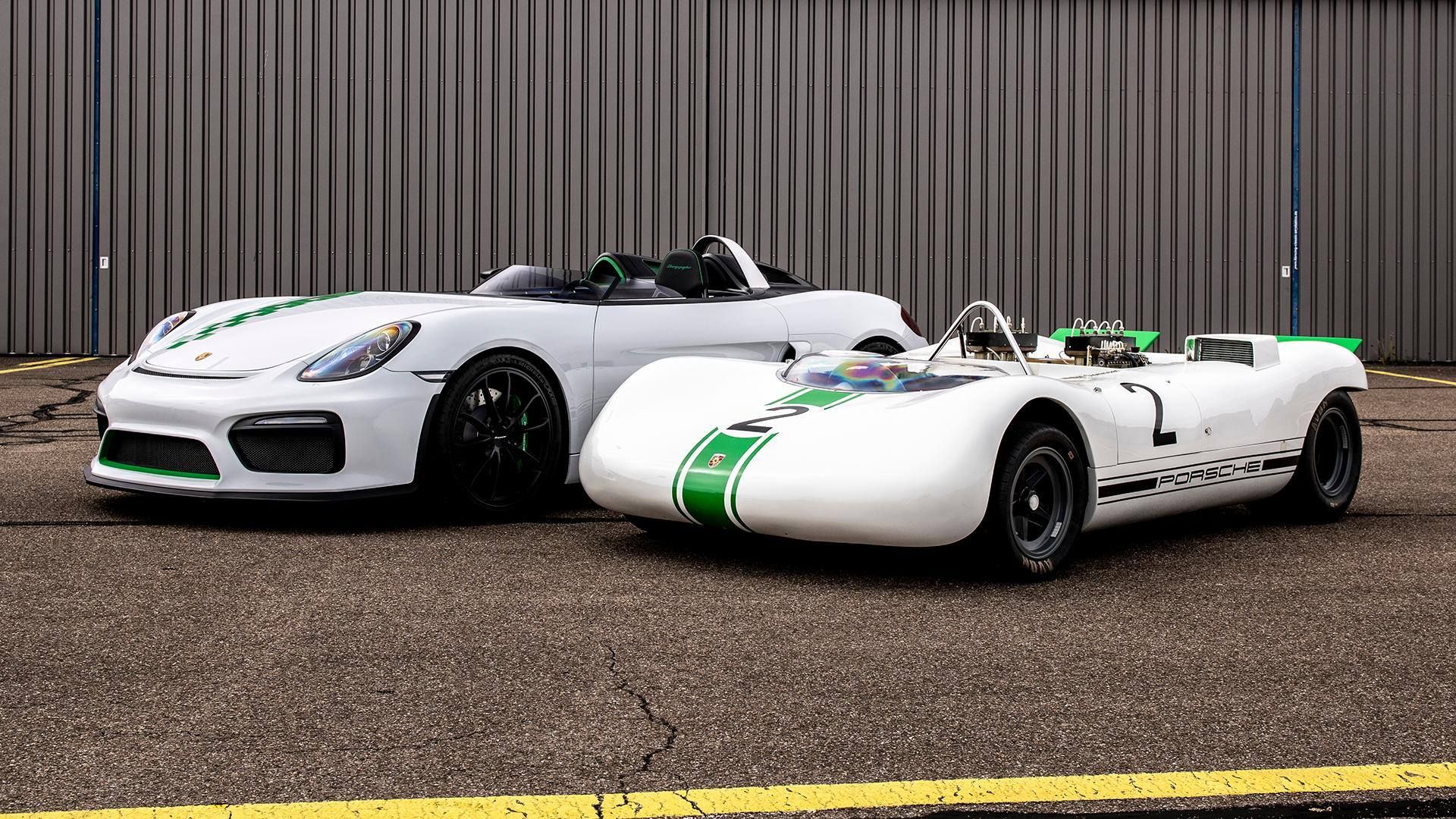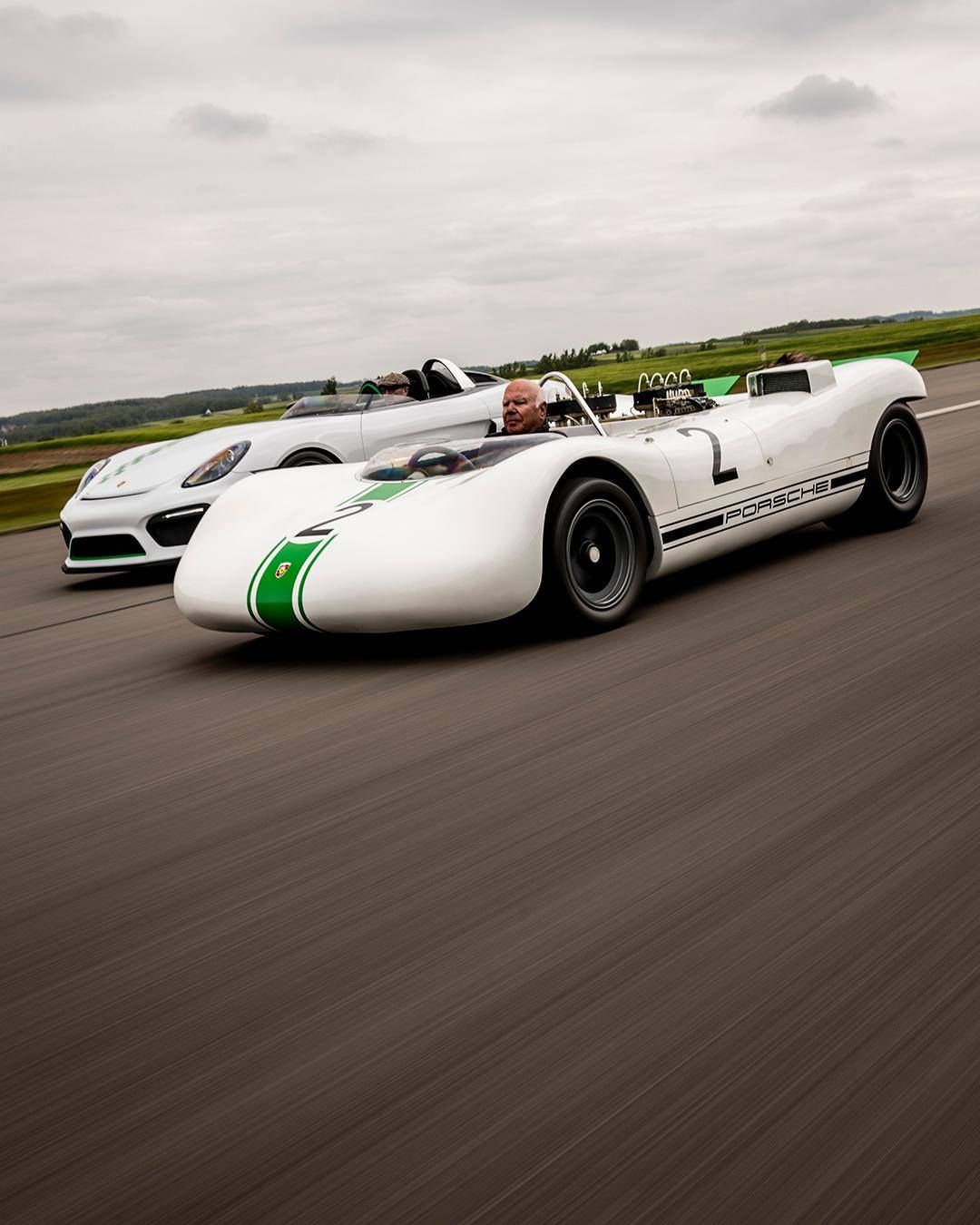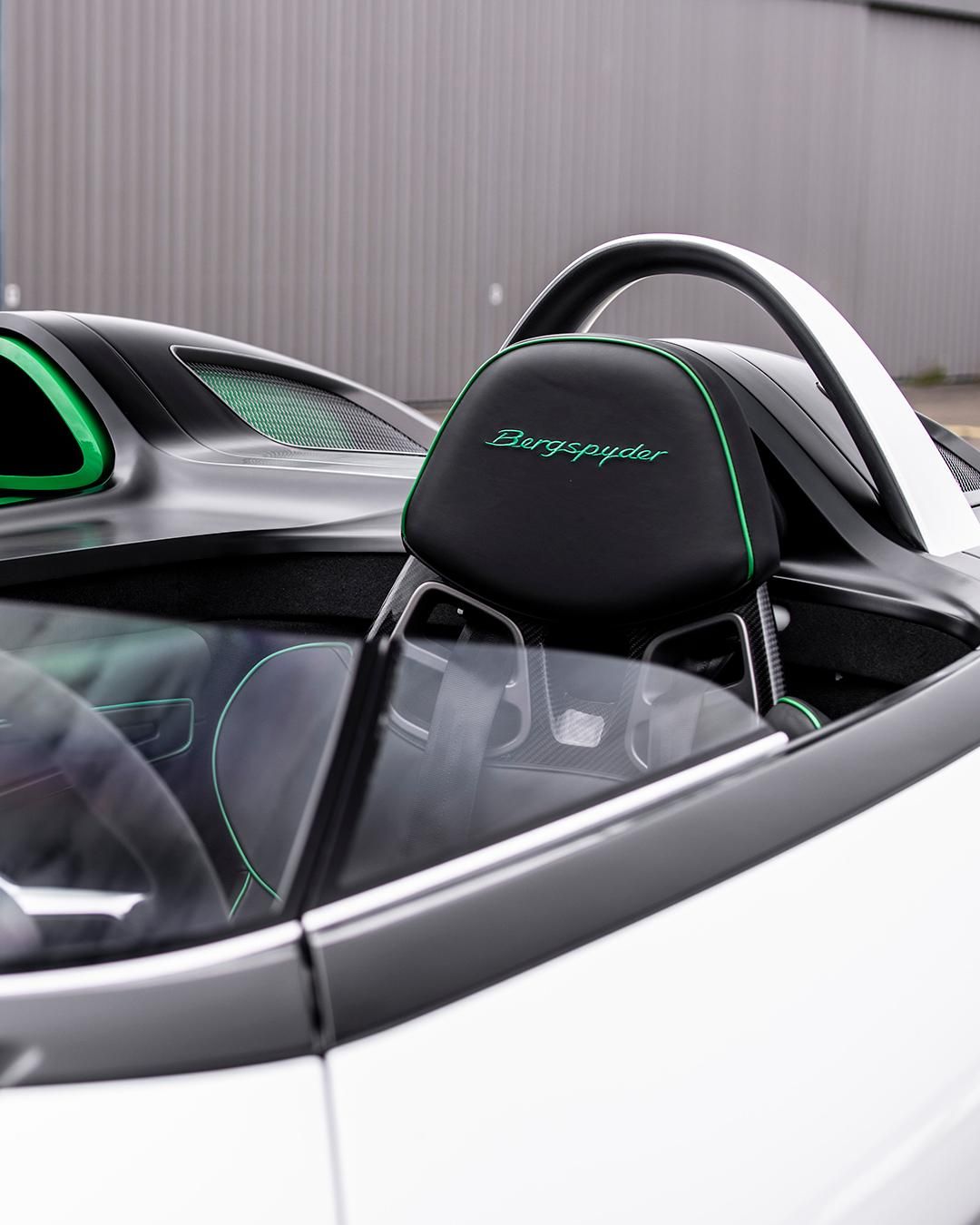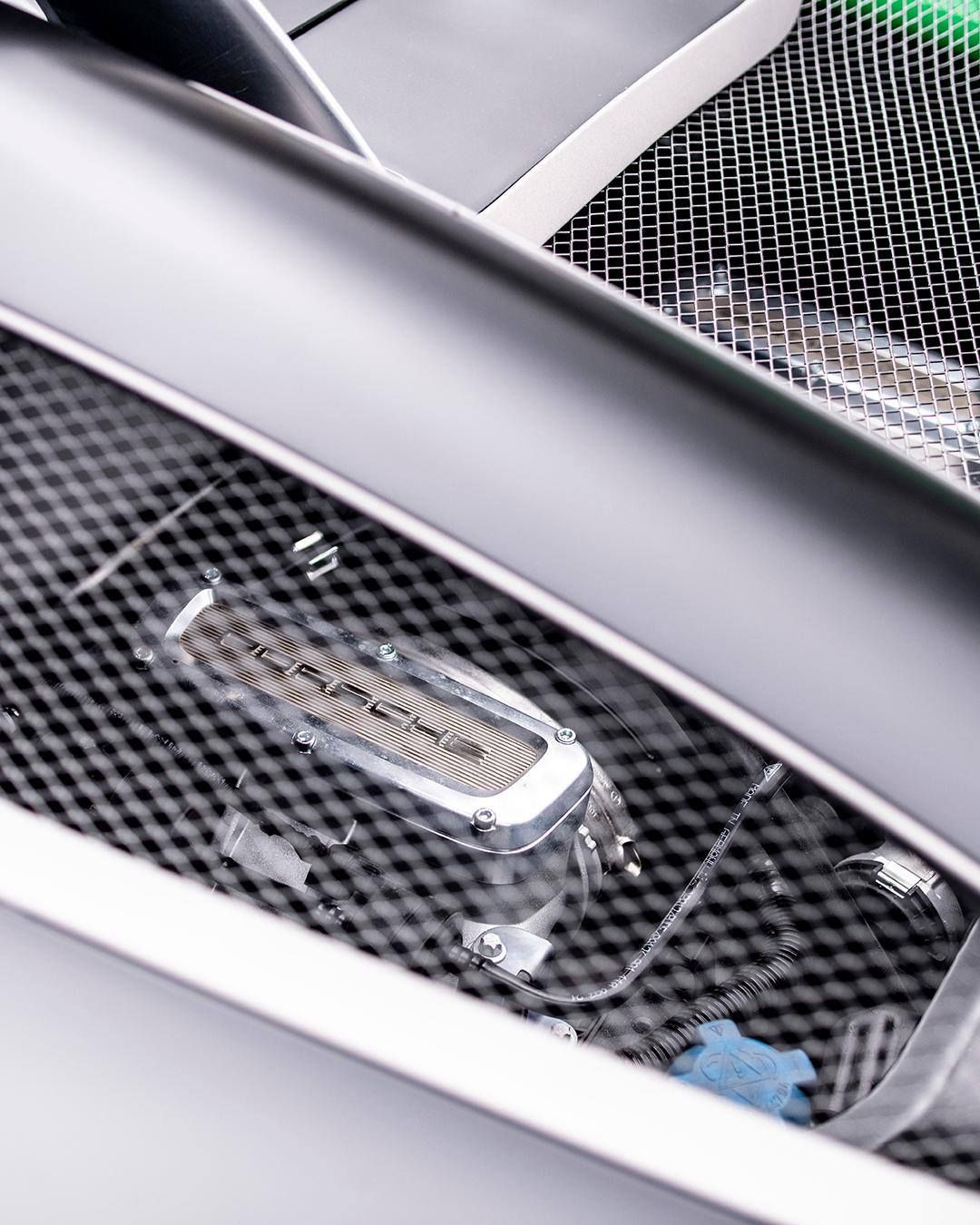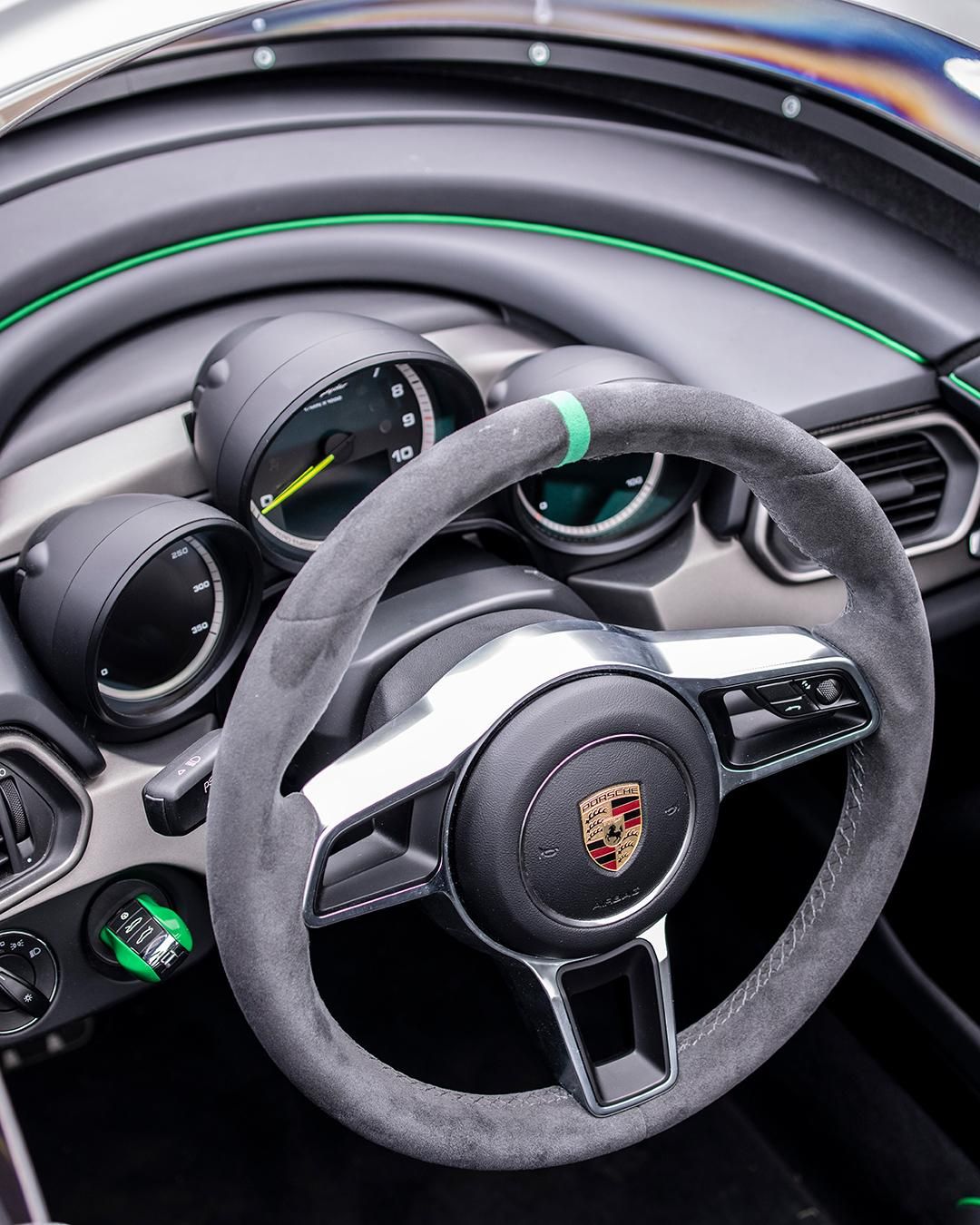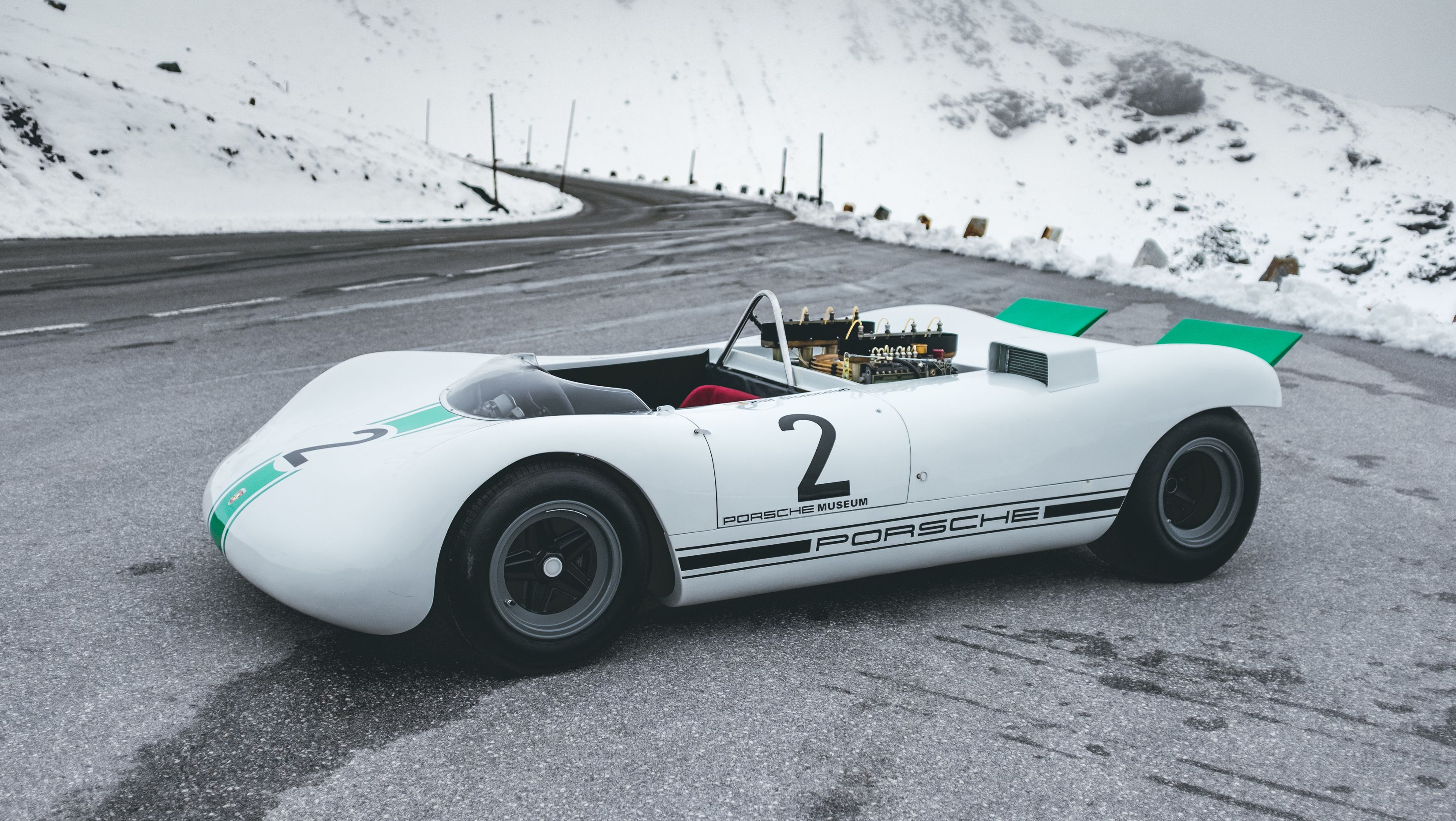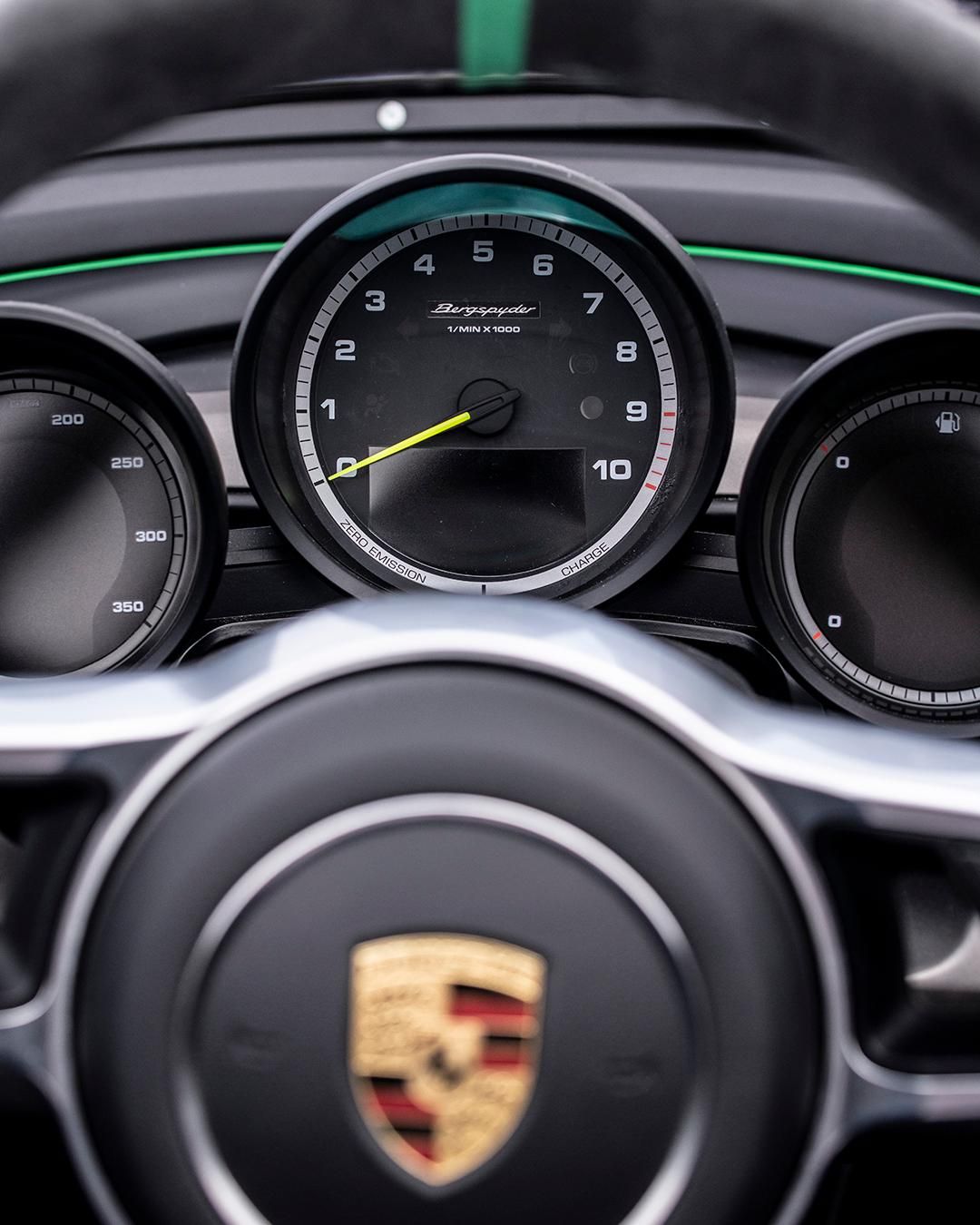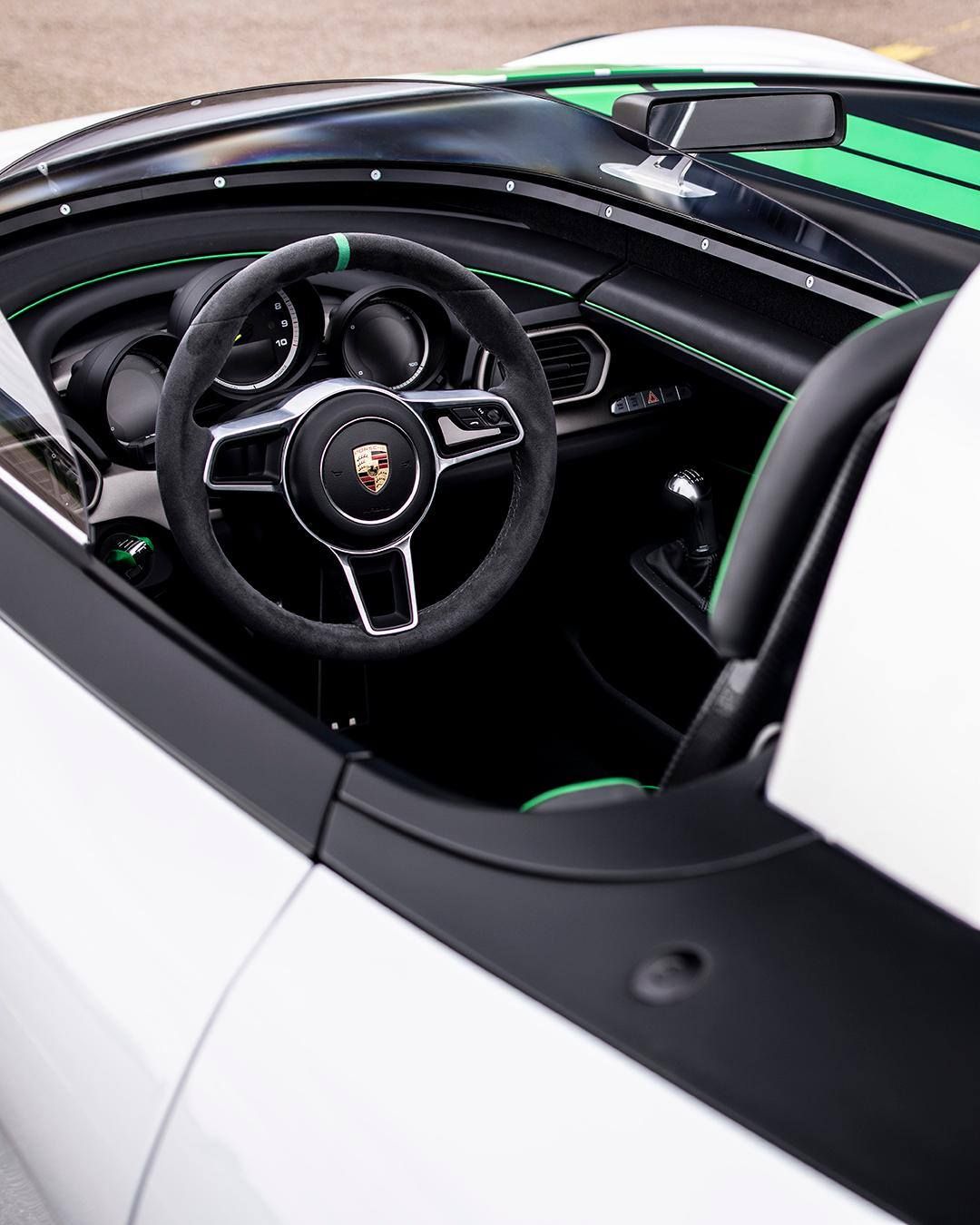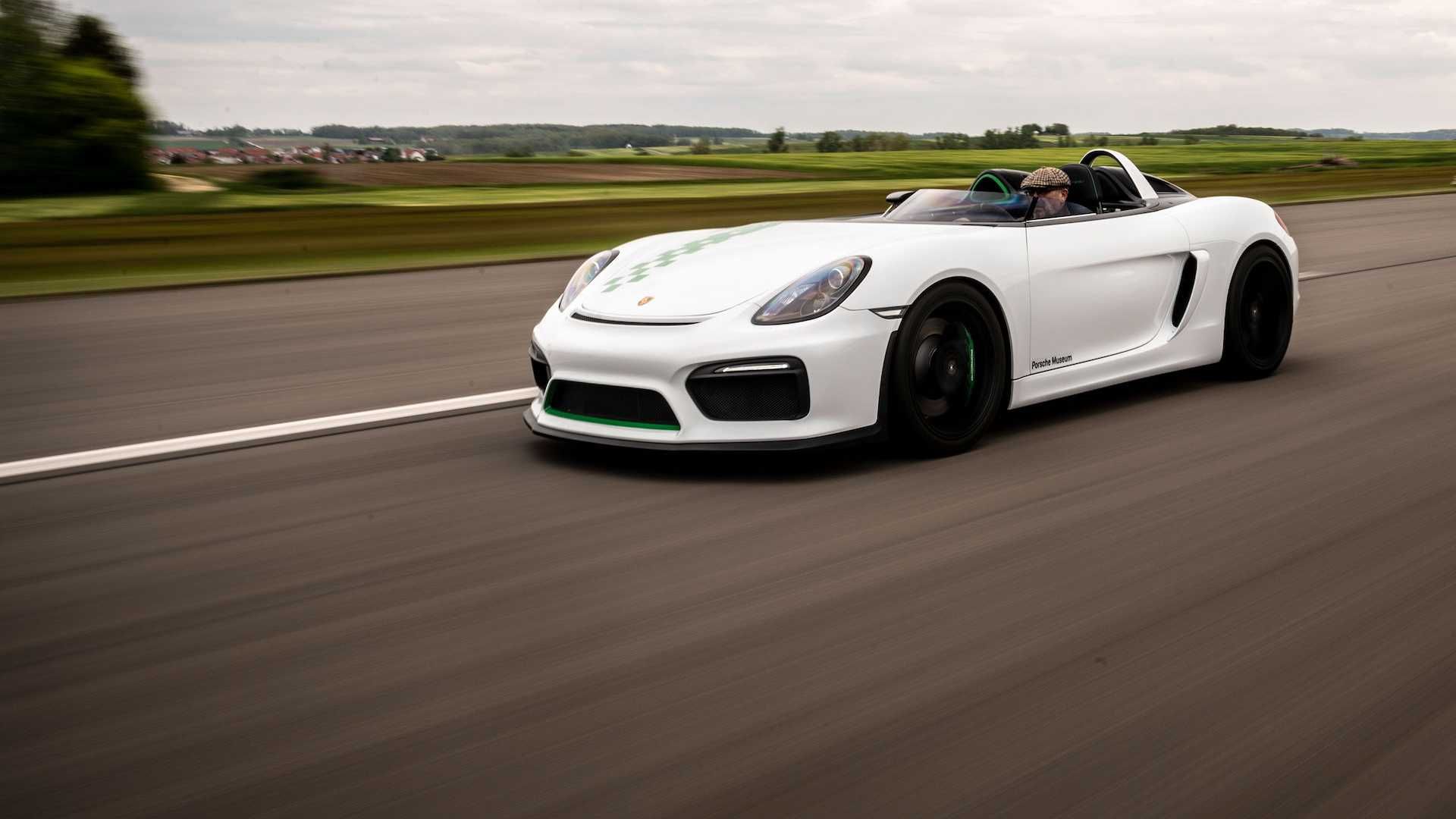Porsche likes keeping secrets. With a vault full of priceless cars and many projects ongoing at the same time, we sometimes get surprised when something new comes out of Wiessach, and this is just such a moment. What you're looking at is a roofless Cayman with one seat and a minimalistic roll hoop or, to be more pedantic, a Boxster from the third generation modified to be lighter than ever. It's inspired by the 909 Bergspyder from 1968, and it only weighs 2,422 pounds, a whopping 741 pounds lighter than a Boxster GTS with the PDK transmission and 476 pounds lighter than the Boxster Spyder.
Now, all of you Porsche fanatics out there, don't jump on your computers dropping emails to Porsche asking about this thing, officially known as the Boxster Bergspyder, because it's not really real. I mean, it is real, the car in the shots does exist, but that's it. Porsche built only one to mark the 50th anniversary of the 909 Bergspyder and, due to potential registration issues, decided to break the mold after that. So, yes, if you want an ultra-light Boxster you still have to wait for the 718 Boxster Spyder but you can already be sure it won't be as light as this one because it can't be. Also, what's cool about the 981-generation Boxster Bergspyder is that it's powered by the 3.8-liter mill from the 2016 Cayman GT4 so there're no turbos. Oh, how we wish Porsche would change its mind...
The passenger's door is welded shut and there's only one seat
If you're a cunning Porsche employee who gets tasked with moving the Boxster Bergspyder to and from the workshop at the Porsche Museum in Stuttgart, don't bother calling up a mate to tell him to come over for the passenger ride of a lifetime because he'd have to sit on a shelf. The Boxster Bergspyder lost its passenger seat in pursuit of all-out weight reduction as Porsche took Colin Chapman's quote, "simplify, then add lightness," almost letter by letter. Also, unlike the Boxster Spyder, the Bergspyder has no soft top. Nowhere. There just isn't one. If it rains, you just park it somewhere under cover, or you man up. In hindsight, though, this car will probably only see rain from inside the museum.
The Porsche Boxster, very much the savior of the company at one time and gateway to the Porsche experience (a base model Boxster costs $59,000 while a 992-generation 911 S will set you back $113,200 today), is a great car for its money. It's fast, enjoyable, light on its feet, largely unproblematic, and has amassed quite a big fanbase, be it in the shadow of the 911. What is more, there are plenty Boxster versions out there, so you're bound to find out to suit your needs but the Boxster we're talking about today you'll never be able to buy, no matter your name or the size of your bank account. The Bergspyder is a tribute car, quite like the 991-based 935 Gen. 2 is a nod to the winged warrior of the '70s.
So, how did Porsche get a Boxster to weigh just 2,422 pounds when a normal one with an automatic transmission surpasses 3,000 pounds and the 981 Spyder, the lightest Boxster you can buy, is also almost 500 pounds heavier?
What's interesting is that, in fact, Porsche decided to forgo the whole standard interior of the Boxster and, in its place, the Bergspyder got all the goodies from the 918 Sypder, including the seat.
What did we lose? Just the lightest Boxster you can think of. With the engine from the then-new 981 Cayman GT4 that produces 387 horsepower at 7,400 rpm and 310 pound-feet of torque for a 0-60 mph time of just under four seconds (a 2,954-pound Cayman GT4 needs 4.2 seconds to complete that same task), and a top speed in the region of 180 mph. Of course, you'll argue that the 981 Boxster Spyder also sports that same 3.8-liter, naturally aspirated flat-six but it also weighs 2,899 pounds. At the end of the day, you can't argue with weight and, that is the lightest modern Porsche that's not a race car you'll see (for a while at least).
As I've mentioned Colin Chapman's name, I bet you're already browsing through Lotus' catalog to find out what's the lightest car you can buy from the British company. Well, it depends on what you're looking for. If it's track prowess you're after, the 2,423-pounds Exige 350 SE that debuted in 2017 is about as light as you can go since it's 57 pounds lighter than an "average" Exige 350 and 112 pounds lighter than an Exige S - and just as heavy as the Boxster Bergspyder while still featuring a roof. But there are lighter versions out there, believe it or not. You can go for the Exige Sport 410 that weighs just 2,324 pounds which is equivalent with 389 horsepower per ton thanks to a 3.5-liter V-6 mill that cranks out 410 horsepower at 7,000 rpm and 310 pound-feet of torque. So you get as much torque as the Bergspyder and 33 extra ponies.
If you just want lightness, you can simply pick the Elise Sprint that tips the scales at just 1,760 pounds with the 1.6-liter engine onboard. Yes, you're not getting much oomph, and you'll have to move to Europe to drive one about but... it's 762 pounds lighter than a car Porsche specifically engineered to be as light as possible! Of course, the Elise is almost 26 inches shorter, but nobody will try to convince you you'll get a lot of car for your money, Lotus is very happy to tell you, again and again, you'll get very little car for your money. How much money? A 2017 Elise Sprint 220 cost $56,110 at the time of its release which is about as much as an Elise used to cost eight years ago when it was still available Stateside. Going back to things you can, there's the 1,545-pound Lotus 340R, an exercise in lightness and see-through side panels. It was made in 2000, and it's one of the (if not the) lightest Lotus to see the light of day in the 21st century. One of them almost sold on BaT two years ago for $40,000. Only eight ever made it to the States and, as expected, they're only O.K. to be driven around a track.
What's a `Bergspyder` anyway?
Fine, we've determined that the oh-so-amazing weight reduction process that Porsche had the Boxster undergo to become the Bergspyder isn't that extreme in the grand scheme of things but, then, why did Porsche do it all? What's all the fuss about the 'Bergspyder' and, more importantly, what's a 'Bergspyder'? I
The European Hillclimb Championship had garnered quite an audience by the mid-'60s and, as hard as it may be to believe in 2019, some of its most popular rounds were included in the World Sports Car Championship, so the manufacturers that targeted the World Championship had to also have in its arsenal at least a car that would cater towards hill climbs. Porsche came up in 1967 with the 910/8 Bergspyder and then, in 1968, with the smaller and nimbler but also infamous 909 Bergspyder.
The same approach was used in 1967 when Porsche unveiled the 910, a capable follow-up of the 906, and the 908, a car initially presented in long tail specification. These two cars, as well as the 906, would be Porsche's weapons in 1967 but, as it happened, Weissach decided it needed one more car for the tightest courses on the calendar: the hill climb ones. That's how the 910/8 Bergspyder came to be, a no-nonsense version of the 910 with a minuscule wind deflector, a lightweight fiberglass body covering the steel spaceframe, and a 271 horsepower boxer eight-pot in the middle.
One of the surviving examples, chassis #031, made headlines recently when the Porsche Museum announced that it won't restore the example once driven to championship glory by German hill climb ace Gerhard Mitter, instead choosing to preserve the car in its current condition that reflects its not-so-easy 52 years on this Earth.
In 1967, only the Oilon Villars hill climb (also referred to as the Swiss Mountain Grand Prix) was featured as a round of the world championship (all of the three divisions), and drivers had to tackle the 4.9-mile course twice. Porsche brought two 910/8 Bergspyders to the event, chassis #028 for Gerhard Mitter and chassis #030 for Rolf Stommelen. Two other chassis were also on site as backup and test cars which means four of the five 910/8 Bergspyders ever built were together that weekend, on August 27th, 1967.
Mitter's chassis #030 sported a titanium tubular space frame, and the whole thing weighed just 990 pounds, 44 pounds lighter than Stommelen's. The two faced opposition in the World Championship event from Dieter Quester in a Lola T110-BMW, Peter Schetty (a works Ferrari driver at the time) who drove an Abarth 2000SP, and Andre Wicky who drove his own open-top 910 that he entered in many other rounds that year. In the end, it was a Porsche affair as Mitter beat Stommelen by almost seven seconds in the No. 196 car. This gave Porsche 19 points in the European Hill Climb Championship and also helped it win the World Championship in Division II (for cars with engines up to 2.0-liters in capacity). Porsche also finished second in Division III (for cars with big engines, over 2.0-liters in capacity), collecting 32 points along the way, just two off Ferrari's winning tally of 34 (after Ford pulled a no-show at Brands Hatch due to the Mirage-Ford situation).
For 1968, Porsche again updated the 910/8 Bergspyder (by adding a second active flap at the rear) but also prepared a new car for Mitter, who again became champion despite the fact that Stommelen won the last event at Gaisberg. Porsche's eagerness to update to new machinery came as Ferrari once again announced it is serious about tackling the European Championship. Now, the PR department of the Prancing Horse had issued a similar press release 12 months prior but the V-6-engined 206 Dino only showed up at Trento Bondone where Gunther Klaas and Ludovico Scarfiotti, a former champion of the discipline, could do nothing to stop the Porsche onslaught with their heavy and underpowered (225 horsepower from the Dino V-6 versus 271 from the Porsche 2.0-liter flat-eight) cars.
But 1968 was supposed to have a different script. At the end of 1967, the CSI (the International Sports Commission) decided to ban purpose-built prototypes racing in the Group 5 category. These cars, be it the Chaparral 2F, the Ferrari 330 P4, or the Ford Mk. IV had been the stars of 1967, but they were really expensive, and the international governing body decided constructors should focus on more economical prototypes with engines that would not exceed 3.0-liters in capacity. This sudden decision, maybe prompted by Ford's dominance more than anything else and with some incentive from French manufacturers Alpine and Matra, both of which showed up with 3.0-liter sports cars in 1968, angered Ferrari. Il Commendatore decided to focus on Formula 1 that year, and the Prancing Horse was represented throughout the year by some antiquated 250 LMs and some Dinos.
What does this have to do with our story about the Bergspyders? Well, by not focusing on global sports car racing, Ferrari would theoretically have been able to redirect some cash towards building a better 2.0-liter prototype, but this didn't happen. As I said, the announcement came, but it wasn't followed by an actual car. Fans of hill climb racing had to wait another year for Ferrari to finally deliver on its promises and show up with the 212 E Montagna that was powered by a 2-liter, 48-valve, flat-12 engine. In the meantime, Porsche stole the show with the 909.
To put it into perspective, Porsche's only F1 car, the 804 that won the 1962 French Grand Prix in the hands of Dan Gurney weighed 1,002 pounds. Here are other vehicles the 909 Bergspyder is lighter than: A 2014 Formula 1 car that could not go below 1,425 pounds according to the regulations, a 933-pound Honda Gold Wing motorcycle, and a 1,005-pound Ariel Atom, to name but a few vehicles.
Porsche dispatched a 909 to be ready for Mitter to drive at Gaisberg, but Gerhard took one good, long look at it and, seeing how flimsy it was, decided against driving it and, instead, jumped in his 910. Rolf Stommelen, looking for any way possible to gain an advantage on Mitter, threw caution to the wind and decided to drive the second 909 brought by Porsche that was adorned with a green stripe (Mitter's car sported a red stripe down the middle). The Boxster Bergspyder's green accents and stripe are there as a nod to Stommelen's 909.
Rolf, a very courageous driver who, one year later, was fastest in practice at Le Mans behind the wheel of the insanely quick and insanely unstable 917, finished third. Both Mitter in the 910 and Dieter Quester in the BMW-Monti were quicker. Then, at Mount Ventoux, Mitter again vetoed driving the 909 and took another storied win ahead of Stommelen in the 909. At the end of the '68 season, Porsche decided to refocus its motorsport activities and concentrate solely on sports car racing as it was preparing to launch the Group 5-spec 917 as well as campaigning a sleuth of 908s.
As such, the 909 is, in my view, a bit of an infamous car. It arrived too late and never delivered on its promise. While fast thanks to the 2.0-liter Type 771 flat-eight engine that developed 275 horsepower, it arrived too late to leave a mark on the series and, what is more, Porsche's lead hill climb specialist, Mitter, refused to drive it in competition two times on the trot, proving that it was a bit of a death trap if you were caught in a crash with it. Stommelen could care less but even him, a full seven years younger than Mitter at the time and with brisk reflexes, couldn't beat the year-old 910 aboard the newer and lighter 909. Maybe Porsche should've dedicated the Boxster Bergspyder to the 910/8 Bergspyder instead...
Further reading
Read our full review on the 2019 Porsche 718 Boxster T.
Read our full review on the 2018 Porsche 718 Boxster GTS
Read our full review on the 2017 Porsche 718 Boxster

